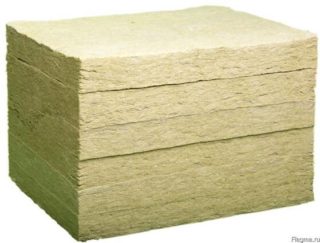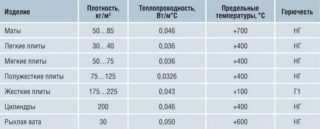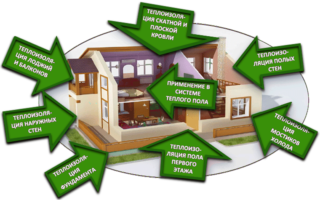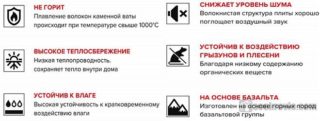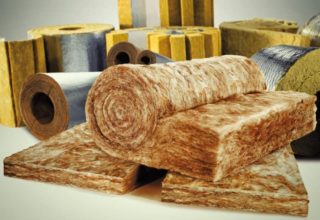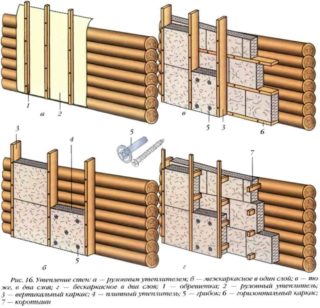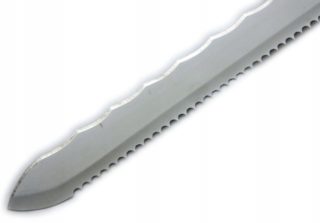Stone or mineral wool is called all heaters, which are made from solid natural material - basalt, gabbro, volcanic slag, sand, metallurgical slag, diabase, limestone, dolomite, plus many related components. But when using this material in construction work, it is necessary to take into account their properties, otherwise instead of a water-repellent layer, you can get the other way around - a hygroscopic substance that will quickly lose its shape.
general information
The very first experience in obtaining basalt fiber belongs to the great English industrialist Edward Perry, who noticed that during the eruption of lava from the volcano it freezes in the air and turns into the thinnest threads. The businessman decided to try to reproduce the process in the workshop. The experience was unsuccessful, since the technology did not provide for the protection of the respiratory organs of workers who several times inhaled finely dispersed substance and became ill.
The next time the fiber was already received in Germany, deciding to improve the process, taking into account Perry's mistakes. The fiber was produced indoors where people did not have access. The result was a basalt insulation, the characteristics of which coincided with the expected.
Characteristics of basalt insulation
 Basalt is a heavy volcanic rock, which includes about 42% of silicon oxide, that is, the ancestor of glass, so it is so difficult for a layman to distinguish materials by name - they are all called mineral wool. Mineral, because it is made from a mineral substance, and wool, because it has a porous light structure due to randomly arranged fibers.
Basalt is a heavy volcanic rock, which includes about 42% of silicon oxide, that is, the ancestor of glass, so it is so difficult for a layman to distinguish materials by name - they are all called mineral wool. Mineral, because it is made from a mineral substance, and wool, because it has a porous light structure due to randomly arranged fibers.
Despite the similarities between the various materials called mineral wool, they can have completely different structures and purposes. The highest quality is the material that has a balanced amount of acidic elements in the composition. This makes the stone wool waterproof and therefore durable.
The second important element of basalt insulation is a fiber binder. It can be:
- synthetic origin;
- bituminous;
- multicomponent;
- concrete
At present, the most used is phenol-formaldehyde resin, although foreign manufacturers no longer produce mineral wool with phenol, since this substance is a carcinogen. At ordinary and low temperatures, it is not harmful, since it does not evaporate, but at high temperatures or in a fire it can cause poisoning.
Thermal conductivity
The coefficient of thermal conductivity of stone wool is very low, therefore, in the winter season, cold does not pass through it, and in summer the material does not let heat into the room. Such regulation occurs due to the porous-fibrous structure in which air masses are retained. While gas exchange takes place, they manage to heat up or cool down.
Depending on the density with which the fibers are pressed into the slabs, the degree of thermal conductivity can vary up or down. The position of the fibers also affects it - how they are located horizontally and vertically. The more intersections, the less mineral wool conducts air masses - hot or cold.
Moisture absorbing ability
 In its normal state, basalt thermal insulation contains not more than 1% moisture. Even when completely immersed in water, it does not absorb more than 3% of the liquid, remaining practically dry.Thanks to new fiber impregnation technologies, it is possible to obtain hydrophobic cotton wool. To do this, use oils or organic silicon compounds. Due to the dryness, fungus and other microorganisms do not start inside.
In its normal state, basalt thermal insulation contains not more than 1% moisture. Even when completely immersed in water, it does not absorb more than 3% of the liquid, remaining practically dry.Thanks to new fiber impregnation technologies, it is possible to obtain hydrophobic cotton wool. To do this, use oils or organic silicon compounds. Due to the dryness, fungus and other microorganisms do not start inside.
If we compare basalt cotton wool and slag wool, the moisture capacity of these two materials will be different. Where there is high humidity, slag should not be used. Moreover, it is impossible to wrap iron constructions with it, since they are quickly covered with a layer of rust due to hygroscopicity and slag.
Vata from diabase or dolomite for moisture resistance can argue with basalt. These materials are as “dry” as basalt. Glass wool is prone to accumulate moisture, so it is used only for internal work.
Vapor permeability
Air circulates inside the stone insulation, so water molecules do not stay in the room. The pores between the fibers are open and do not interfere with moisture evaporation.
Fire resistance
In nature, basalt rocks melt at temperatures above 1000 degrees. It is impossible to achieve such a value under domestic conditions, therefore, in the worst case, the material is sintered and loses its shape, but this requires a very strong fire using chemical fuel.
Stone wool does not burn and does not support combustion. With a decrease in temperature during a fire, the fibers immediately harden. The only harm that it can cause to health is the release of a binder and inhalation by a person.
Density
The density of basalt wool depends on the amount of fibers that were used in the production. Different brands produce materials that in their density are designed for certain works - internal, external, for pouring into concrete. The higher the density, the more stress the basalt wool can withstand. For example, not every brand can be laid under a concrete floor, since under the weight of a cement mortar it will lose its shape.
The most dense material is available in slabs. Basalt slabs for insulation of external walls and floors are very solid and can withstand heavy compressive loads.
Soundproofing
Basalt insulation is often used as a soundproofing material. Randomly arranged fibers create a barrier to sound waves. There are separate brands that are designed exclusively for soundproofing rooms.
Where is mineral wool used?
Depending on the density, stone wool is used for various works. There are grades of material:
- P-75 is the lightest. The weight of a cubic meter of material is 75 kg. It is used for horizontal surfaces with a minimum load, since at a pressure of cotton wool it shrinks and loses some of its insulating properties. Can be used to insulate an attic or roof. Suitable for siding or other rigid facade cladding.
- P-125. The weight of a cubic meter is 125 kg. Suitable for interior walls, doors, and ceilings, which positively affects the noise level.
- P-175. High-density material that looks like a wooden plate. Suitable for thermal insulation of reinforced concrete structures, interfloor ceilings with increased load. Dense slabs are suitable for plastering, since liquid mixtures are well applied to a rigid base.
- The P-200 is the toughest material in this series, so there is not enough air in it so that it is possible to combine soundproofing properties and strength. This brand is used for pouring into concrete. However, it does not crumple and does not lose in thermal conductivity.
The first two grades are available in plates and rolls. The rest - the densest - only in the plates. The products also differ in thickness: for ordinary conditions, a layer of 50 mm is used, in extreme conditions - 100 mm.
Cylindrical structures are also available for warming pipelines located above the level of freezing of soil, chimneys, water pipes. Such products have special locks in the form of cutouts so that the plate is in good contact with the pipe.
Pros and cons of basalt thermal insulation
Basalt stone wool is a universal insulation in all respects, when compared with other types - glass wool, slag. If you insulate the house with basalt fiber, you can count on the following advantages:
- Long service life - according to the manufacturers, up to 50 years.
- The material does not shrink, therefore, does not lose useful properties during the service. Provided that it is selected correctly and technologically correctly laid.
- Water vapor and condensation do not accumulate in the room, so there is a low probability of mold formation.
- Save energy and coolant by storing heat in winter. In summer, air conditioning is less likely to be included, as the walls keep cool.
The main obstacle for people is the myth of carcinogenicity of basalt wool, that is, its ability to cause cancer in humans. The International Agency for Research on Cancer in the United States conducted a series of studies, based on which mineral wool was put on a par with caffeine and tea. In their opinion, vegetables in brine are more harmful, since they cost an order of magnitude higher, that is, they are more dangerous. As for the binders, their composition is not more than 4%, so they are not able to cause any disease.
These studies were confirmed in Germany, the country in which the laws on ecology are the most stringent. Even there, mineral wool was attributed to substances whose carcinogenicity could not be proved.
Varieties of insulation
All types of mineral wool can be distinguished by the type of fiber - its thickness, length and physical properties. For example, the thickness of the fiber in the glass wool is from 5 to 15 microns. With all the positive qualities, thin glass threads have a high degree of fragility, can get into the lungs and cause health problems. If you work with this material, you need to wear a protective suit, a respirator and glasses so that the threads do not penetrate the skin - this causes redness and itching.
By type of fiber
The thickness of the stone wool fibers is from 3 to 5 microns, their length is up to 16 mm. This allows it to be pressed into solid slabs with a minimum amount of air inside. Fibers of basalt insulation do not prick and do not damage the respiratory system. You can work with them without protective equipment.
Slag is composed of fibers up to 16 mm long and 5 to 12 microns thick. They are as prickly as glass wool, so workers need to use protection.
Foiled
Ordinary stone wool and foil is produced to reflect more heat inside the room. For bonding, aluminum foil is used, polished to such an extent that it can reflect the greatest amount of radiant energy.
A layer of aluminum can be glued or sprayed onto a basalt insulation. Foil strengthens such properties of mineral wool as:
- thermal conductivity;
- waterproofing.
Useful properties of materials in which the degree of moisture protection is low, for example, slag, can be improved using foiling technology.
Strength
Strength is based on the properties of the feedstock, which is used to produce mineral wool. The most durable is basalt - a heavy volcanic rock, followed by waste blast furnaces, then glass.
Mounting Methods
There are three ways to install stone wool or any other insulation. Two of them include the use of drywall, the third - just into the wall.
For the method without drywall, you need:
- estimated amount of insulation;
- foundation for the construction of the profile;
- staples for the convenience of attaching cotton;
- tape measure and scissors.
Operating procedure:
- Fix the brackets on the wall every 50 cm. They will be put on mineral wool insulation.
- Unwind rolls and cut with scissors to the height of the walls.You can take with a margin of 3 cm in case of deformation.
- Put pieces on the staples so that the layers overlap.
- Attach profiles and press the material to the wall.
In some cases, cotton wool is covered with a vapor-permeable film. It is also good to prevent particles from entering the eyes and skin.
The second way:
- Knock down a drywall profile so that its width is not less than the thickness of the mineral wool.
- Screw the profile to the wall and push the roll insulation into it. Sometimes they make square holes in the profile and put mineral wool plates in it.
- Sew cotton wool with drywall sheets.
If you do not plan to make gypsum plasterboard walls, you can use more dense plates and stick them to the wall, having previously cleaned the remains of the plaster. There are special adhesives for this. In the same way, basalt cotton wool is mounted on the ceilings or the roof, even if the frame is pre-constructed.
The most popular way to sew up a wall with a heater is to fasten the plates with dowels, after placing a square plate of dense material, such as plastic or wood, under the hat.
To lay mineral wool on the floor under a concrete screed, logs are used - floors made of wood or polymeric materials, between which the insulation is laid. In this case, dense slabs are used, capable of withstanding the load when pouring concrete mix with high weight from above.
How to cut insulation
When cutting mineral wool insulation there is a risk of damage to the fibers, which will affect the thermal insulation properties. The most suitable tool is an installation knife, but it has a short blade - it will not cut thick plates.
In the kitchen you can find a serrated knife for cutting bread. Before work, it must be sharpened.
In construction supermarkets, you can find special knives made of stainless steel or carbon fiber, which are designed for cutting insulation. A wood saw is a good alternative.
